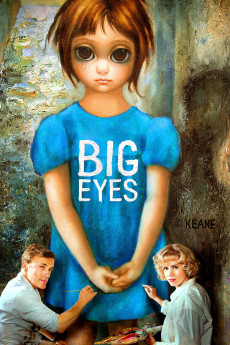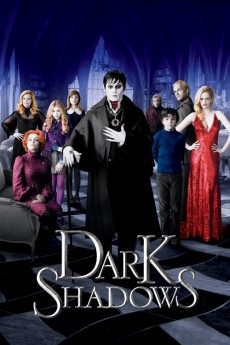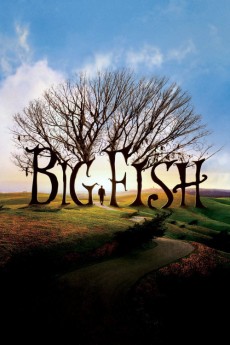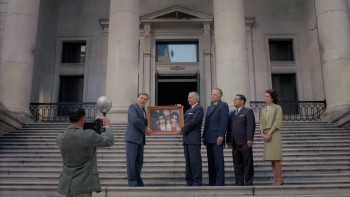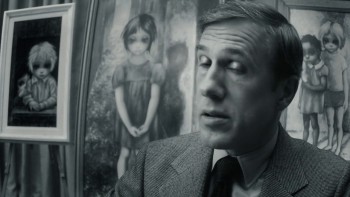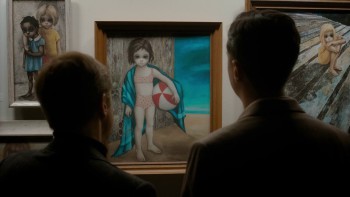Big Eyes (2014)
2014
Action / Biography / Crime / Drama / Romance
Big Eyes (2014)
2014
Action / Biography / Crime / Drama / Romance
Big Eyes (2014) Synopsis
The opening title card reads: BASED ON TRUE EVENTS.The opening shot is one of Margaret's paintings, then replicated over and over, in mass production. We read the quote: "I think what Keane has done is just terrific. It has to be good. If it were bad, so many people wouldn't like it, attributed to Andy Warhol."The movie is narrated by a newspaper editor named Dick Nolan (Danny Huston). Opening in the year 1958 in Northern California. Margaret Ulbrich (Amy Adams) packs up her things and takes her young daughter, Jane, away; she is leaving her husband behind, something which was very uncommon in those days. They drive up to North Beach, San Francisco where her best friend Dee-Ann (Krysten Ritter) lives and they move in with her. Dee-Ann tells Margaret about the art galleries in town.Having to support her daughter alone, Margaret applies for a job. She has no work experience but studied at an art institute so she is put to work painting illustrations at a furniture factory. On the side, she draws peoples' portraits at an outdoor art show but is widely ignored. There, Margaret catches the eye of Walter Keane (Christoph Waltz), flirting with women and selling his street scene paintings nearby for $35. He encourages Margaret to be more aggressive in her salesmanship, trying to convince a young girl to buy a portrait before realizing she is Margaret's daughter and the model for her work.Margaret and Walter go out to a restaurant; Walter says they wont have to pay because he has given them artwork, revealing he is good at making deals. He tells her about living in Paris and how he studied at an art school there; then compliments Margaret's work saying he wishes he could paint people instead of street scenes.Margaret paints Jane outside the Palace of Fine Arts. Jane points out that Walter's canvas is blank but he says he needs to be inspired before he can start. Walter asks Margaret why she draws eyes so big and she says eyes are the windows to the soul and tells him when she was little, she was deaf for a short period of time and she found herself looking at peoples eyes to read them. A man recognizes Walter and she learns that he is a realtor and not a painter. He tells her that he hates his job and all he ever wanted to do was be an artist.Walter and Margaret share an affectionate moment in her place, much to the annoyance of Jane. When she goes through the mail, Margaret discovers that her husband wants to get full custody of Jane, calling her an unfit mother as a single woman. Walter proposes to her, saying they can raise Jane together. They get married in Hawaii, a place Margaret ends up loving. She paints a portrait and now signs it KEANE.Back in California, Margaret tells Dee-Ann all about Hawaii. Dee-Ann, having promised never to hold back her feelings about Margaret's lovers after her last failed marriage, tells her that Walter has been with every woman on the art circuit. Margaret tells her she's not naïve and that Walter is a good provider. She gets her fortune cookie, which tells her success is about to come.Walter tries to sell his work to an art gallery, in the process interrupting the owner, Ruben (Jason Schwartzman) as he tries to make a sale. Ruben points out that Walter only lived in Paris for a week and wonders why he keeps creating Parisian street scenes. Walter shows him Margaret's Big Eyes paintings but Ruben scoffs at them, saying the eyes are like big stale jellybeans. He tells Walter to leave before the taste police arrives.Margaret and Walter to go an exclusive jazz club with Walter complaining that art's popularity is determined by a committee who meet for brunch and decide what's cool. Margaret argues that art is purchased when it speaks to people but Walter doesn't agree. Walter tries to convince the club's owner to purchase his paintings; when the owner refuses, Walter suggests that he can rent out the walls to exhibit his work.Walter tries to promote the artwork at the club but is stationed by the restrooms and nobody pays any attention to the paintings hanging nearby. A drunk woman is touched by one of Margaret's paintings. Walter is disappointed to hear she's not interested in his own work; nonetheless, Margaret's painting sells. Walter goes upstairs and fights with the club owner about setting him up down near the restrooms. Cameras photograph the fight, in which the owner is knocked over the head with one of Margaret's paintings. It ends up on the front page of the local newspaper.Margaret bails Walter out of jail. He tells her that he let a couple think he had painted the Big Eyes to make a sale. She tells him never to do that again.The next time Walter goes to the club, it is packed with people, looking to get a sense of what has made the news. The club owner is excited at all the new activity and stages a fight with Walter to generate more buzz. Dick Nolan, who has served as our narrator, introduces himself to William he has a celebrity gossip column and wants to know more about Walter's hobo kid paintings.Walter surprises a sleeping Margaret by showing her all the money they've made from sales. He tells her he needs more paintings and that they've become a great team she does what she loves (painting) while he does all the schmoozing at the club. Walter does just that, taking his job as salesman very seriously. Margaret surprises him at the club and overhears Walter trying to impress some women by claiming he painted the Big Eyes. They argue privately he tells her he is just trying to sell paintings and buyers pay more when they meet the artist. She points out she is only staying home because he demanded it. He tells her they should focus on making money and he wouldn't mind if someone else took credit for his Parisian landscapes. She is surprised he can give away credit for his work and has no emotional connection to them. The argument is interrupted when a rich Italian industrialist walks by and wants to know who the artist is. Margaret is torn on how to respond but Walter pipes up, claiming it is him and ends up making a $5,000 sale. Afterwards, Margaret says he is being dishonest but he tells her that they're both KEANE so now they are one and the same.Dick Nolan reports as Walter generates publicity by giving away paintings to the mayor, a Soviet diplomat, Joan Crawford. Walter decides to open up his own Keane Gallery but Margaret feels uneasy about the lie. When they are putting up a poster to promote the opening, Jane tells her mother she remembers when she posed for the painting on the advertisement. Margaret has to convince Jane that she is remembering incorrectly and Walter says he was mimicking Margaret's style when he made it.Margaret goes to confessional and admits she has lied to her daughter, at the urging of her husband, although she is not that kind of person. The priest asks if her husband is that kind of person. She defends him and says he just wants to make money so they can buy a house. The priest tells her as a Christian, she knows that men are the head of the household and she should trust his judgment.The Keane Gallery opens. Dee-Ann is there and she hints to Margaret that she is suspicious about Walter being attributed to the Big Eyes paintings. A man asks Margaret if she paints, too, and she doesn't know how to answer. Walter is asked about his techniques and is caught in a lie when he claims to have done a painting in oils when its actually acrylic. The guy asks Walter what inspires him to paint little girls and he has to make up a loquacious response.At home, Walter is watching Perry Mason. An art critic appears during the commercial break, chastising Keane's work because he's won no awards and is only known because he's publicized by Dick Nolan. Upstairs, Jane almost walks in on her mother painting in the off-limits art room but is sideswiped by Walter, who tells Jane to go get ice cream from a nearby truck. Margaret tells him she hates lying to her daughter but he points out Jane now has a trust fund. He asks her about her work and says he's going to go on television to defend it. She asks him what inspired his Parisian landscapes and if the streets were as lovely as he depicted; he says, no, it was after the war and then gets the angle for why he (allegedly) painted the Big Eyes portraits.On television, Walter claims seeing orphaned children in a war-torn Paris was what inspired his work. The women on the panel are touched. The Keane Gallery gets even more popular - people rip the promotional posters off of poles and ask them to be autographed. Walter gets annoyed that none of these people actually want to buy expensive paintings but realizes that they all want to take posters he starts selling the reproductions for 10 cents each and realizes they can make money off of reproductions.At the supermarket, Big Eyes replicas are on display. Margaret observes a book on Numerology and then is distracted when she starts seeing everyone with GIANT EYES. She goes home and paints a new portrait one with elongated features and small eyes. Walter is confused when he sees it. Margaret tells him she wants to sign it as herself, so that she can honestly tell people she is also a painter. He becomes paranoid and tells her that if she tells anybody, the empire collapses and they have to return all the money because they've committed fraud. She breaks down, saying that she's locked up in the room for 10 hours and that she just wants to have credit for the new paintings.Walter turns this into a new angle for publicity a family of painters, with Margaret's abilities minimized by including Jane in the story, showing off her childish work. Dick Nolan, interviewing for this story, tells Margaret people don't buy lady art but Margaret reminds him of Georgia O'Keeffe. When she talks about Modigliani and painting, Walter shuts her down, telling her to stick to the family angle. The interview is interrupted by Lily, a 10-year-old girl who is revealed to be Walters daughter. Margaret pulls him aside and is angry that he never told her about his daughter; Walter says hes supposed to have visitations once a month but he never enforced this. She asks how he can keep something big such a secret. He tells her he puts up with HER daughter and never complains. She tells him shes going to pretend he didn't say that.At the gallery, a man admires Margaret's work meaning her new style. He asks why she signs it MDH and she explains she loves the number 7, pointing out M is the 13th letter, D is the 4th, H is 8, 1+3+4+8=16, 1+6=7. Walter pulls her aside and chastises her for talking about numerology. Nearby, two snobby men lambast the artwork but admire Walter for turning it into a business, selling reproductions and postcards. Ruben stumbles upon a display of Keane artwork in a store window and says, Christ. Its a movement.Now Margaret and Walter live in a five-bedroom mansion 30 minutes away. Dee-Ann comes to visit, astonished at the size of the estate and mentioning that Margaret has been out of touch. Dee-Ann forces her way into Margaret's art studio, despite her pleas; Walter arrives home then, pretending that they share the space and the artwork on display was produced by him. There is awkwardness between Dee-Ann and Walter at dinner. Later, Walter kicks her out and tells her never to return again. Dee-Ann screams out "fuck you!" and drives off.Jane and Margaret are outside playing. She goes into her painting room and confesses to her dog that she is the one who painted the Big Eyes and nobody knows but him. She decides to paint a new painting of a woman with her dog; while going through a crate to find a blank canvas, she finds a stack of paintings with Parisian street scenes but they are all signed by S. CENIC.Margaret runs into the living room and scrapes off KEANES signature on one of the Parisian landscapes that is hanging there. It is revealed to be originally signed by S. CENIC. Walter later comes home, bragging about all the important people he got to hang out with. He says a dignitary from China is visiting the town and Margaret should paint a big-eyed/slanty-eyed little kid for her. Margaret suggests she give him one of his Parisian street scene paintings but says she might already have a Cenic. Walter is caught in a lie and tells her that Cenic was his nickname in Paris since the other students admired his SCENIC art pieces. She knows he is lying, pointing out that he paints over the name, and realizes that shes never seen him paint even though she thought she had. She asks if hes ever been to Paris. He admits that he always wanted to be an artist but never really had the talent. Later that night, Margaret refuses to let Walter sleep with her, telling him there are three extra bedrooms and he should pick one.Days later, Walter learns of the 1964's New York World's Fair. At dinner, he demands Margaret paint something to put on display. She refuses and he tells her he'll have her whacked if she doesn't adding that he knows people. She cries, taunting him to kill her after keeping their secret for so long and pointing out that she no longer has any friends. He is unsympathetic and tells her that there will be 70 million visitors to the World's Fair and they should reveal his masterpiece there. She tells him that you can't announce a masterpiece and that Michelangelo took four years to paint the Sistine Chapel. He tells her that UNICEF is sponsoring the Hall of Education and suggests she does a Cinerama-sized painting showing the children of the world. Margaret is upset because she says art can't be contrived; it has to be inspired - Walter doesn't understand this concept.Margaret slaves away in her painting room on the piece, angry at the overwhelming obligation. He asks her to provide some preliminary sketches of hers so it can be published in a coffee table book titled Tomorrow's Masters.That night, Jane is hungry for dinner and she uses a key to get into the painting room. There, she sees her mom working on the masterpiece for the World's Fair. Jane tells her she knows her mom is the real artist.John Canady (Terence Stamp), a senior art critic at the New York Times, castigates the World's Hall display (called Tomorrow Forever). A civic leader tells him that the work wasn't chosen but Mr. Keane contacted them directly and they decided to include him after a discussion at a luncheon. Meanwhile, Walter is throwing a large party filled with important people to celebrate his success the upcoming book, the World's Fair piece. Margaret mentions she wants a divorce. Walter is thrown for a loop when he is given John Canady's scathing review of the Tomorrow Forever exhibit in the New York Times. Since John is at the party, Walter screams at him. Canady tells him his work is kitsch and Walter tries to stab him with a fork.Back in California, Walter is still raging, now drunk. He says he will sue Canady, the World's Fair, UNICEF then screams at Margaret for betraying him with her painting. He starts throwing matches at Jane and Margaret. They run into the painting room and lock themselves in. Crazily, he watches them through the door's keyhole and then throws matches inside. Margaret stomps out the flames and then runs off with Jane. They drive away; Margaret tells Jane in the car that they're going to start a new life in Hawaii.Several years later, Margaret and Jane settle into a life in Honolulu. Walter calls Margaret on the phone, only knowing how to reach her recently because she has sent divorce papers to him. He reminds her about their enterprise and says he will not agree to a separation unless she signs over the rights to every painting she's ever produced. She agrees because divorce is more important to her. This surprises him so he takes it a step further and asks about future revenue stream. He tells her he wants 100 more Walter Keanes. She doesn't object.Margaret paints new work, shipping them in large crates from Hawaii to California. She is overprotective towards Jane, who tells her she needs to make some friends; she has been too paranoid letting anyone come over, for fear they should discover she is the one creating Walter's artwork. One day, two Jehovah's Witnesses come to the home and talk to Margaret about the Bible. After a long discussion, the women convince Margaret that honesty is important. The next time Walter receives some artwork, it is signed MDH Keane.On a Hawaiian radio show, Margaret admits that she is the actual painter of the work attributed to Walter Keane. This makes national news. Walter goes to Dick Nolan, claiming Margaret has gone nuts and uses the sketches in Tomorrow's Masters attributed to 1946 as proof that he was the author (although these were her own sketches made at a later date).Margaret is furious and the Jehovah's witnesses encourage her to fight for the truth; Jane suggests a lawsuit and Margaret complies, suing both Walter and the newspapers that printed his version of the story for libel and slander.Reporters swam the courthouse in Honolulu the art world is abuzz, wondering if Margaret really is the true painter or if she's just a bitter ex-wife. Margaret walks by the reporters without a word but Walter stops, pompously, telling them he hopes Margaret gets the psychiatric care she needs.The court quickly dismisses the libel lawsuit, citing that Margaret has been corroborating his story in nearly 700 articles over ten years. The newspaper editors expensive lawyers leave and Walter realizes he still has to defend himself against slander, without representation. He agrees to defend himself, explaining that hes always taken care of himself and doesn't need any rent-a-suits to defend his name.Newspapers latch onto this story, with Dick Nolan pointing out that Walter isn't fit to represent himself the only thing he knows about courtrooms is from watching Perry Mason on TV. At the trial, Walter tries giving a speech to the jury but is chastised by the judge for not asking Margaret questions. He asks why she would go along with the scheme and she said she was forced into it and he had her dominated. She felt she didn't have any other options and giving away her paintings made her feel like losing a child. Walter convinced her without his salesmanship and promotion skills, they would never make money and be able to support the family. She calls him a Jekyll and Hyde, reminding him of threatening to kill her if she ever told the truth.Walter questions himself, running back and forth in and out of the witness stand to do so. He brags about all the important people he's gotten to meet and all the places he's gotten to travel, nauseating the jury. The judge finally stops him, telling him this is a case of he said/she said and the best way to prove who painted the Big Eye paintings is for them each to paint. He gives them each an hour to replicate their work. Margaret works steadily but Walter is hesitant; he finally claims his arm hurts too much from an injury for him to hold a paintbrush. In the end, it is clear that Margaret was telling the truth.Outside, Margaret shows off the painting she did in court and tells a reporter she is calling it Exhibit 224. We learn that Margaret won the case on all points defamation, emotional distress, damaged reputation. She says she doesn't care about money; she just wants credit for her work and now she feels she has gotten her art back. A fan asks her to sign a copy of Tomorrow's Masters and she does, finally autographing her own work.A series of closing cards say that Walter continued to deny Margaret's claims to the very end until he died in 2000, bitter and penniless, never producing another painting.Margaret found happiness in Hawaii and eventually moved back to San Francisco and opened a new gallery. She still paints every day. The final shot shows a photo of the real Margaret Keane seated next to the actress Amy Adams who plays her in this film.
Published Time: 2015-11-01 04:57:55

